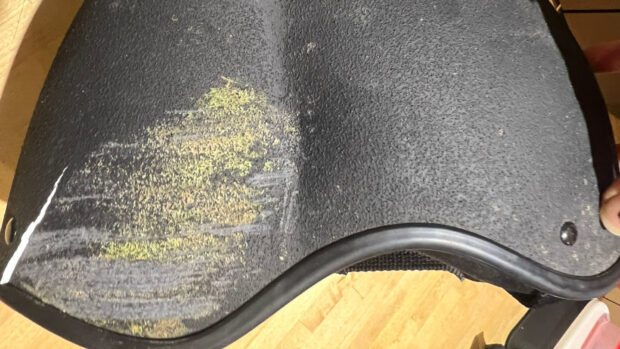WORRYING inconsistencies in the force under which headcollars and safety devices break have been found, as riders may have a false sense of security over the risk of injury to themselves and their horses.
As a follow-up to a study that found nearly a third of respondents had experienced horses’ suffering headcollar-related injuries, including 167 deaths, the same researchers took the issue further.
Having found a lack of research in the area, and standards or guidance for headcollar design and use, David Marlin, Jane Williams, Kirsty Pickles and Roberta Ferro de Godoy investigated how much force it took to break or open a range of collars and safety devices.
They found that although, as expected and in general, safety headcollars opened under less force than it took to break leather ones, which in turn was less than for synthetic collars, the inconsistency in the pressure under which the items broke or opened was “cause for concern”.
“Until now, there’s been no objective research on this,” Dr Marlin told H&H. “It’s all been just opinion on the safest practice. People think it’s safe if you’re using baler twine but I don’t like the idea of using it now.”
The researchers tested fine, medium and heavy-duty baler twine, and found that although the force needed to break it increased across the three as expected, there was too much inconsistency in the force needed for confidence that it would do its intended job.
“The range of opening forces and the variability in opening forces for standard headcollars, safety headcollars and safety devices is a cause for concern and may give horse owners/handlers a false sense of security of safety, and actually predispose horses and handlers to an increased risk of injury,” the researchers said in the study, published in the Journal of Sports Engineering and Technology.
Dr Williams told H&H: “Because you don’t know when it’s going to fail, you’re just hoping it’s fit for purpose. A lot of these things are marketed on safety, but manufacturers can make big claims without any research, and I think it’s really important the research is there.”
The team would like to see set standards for headcollars, so owners can make informed decisions.
Dr Marlin said: “It’s about owners having more information to understand that some types of headcollar, in some situations, can cause serious injury and death.”
He said he would recommend using a safety headcollar and a safety device, either between collar and rope or rope and tying point, adding that just a safety device in either point will not help if the headcollar itself is caught on something.
Dr Williams added: “I think sometimes we underestimate people’s desire to do the best by their horses, and if there was a range with more information about safety and when it would break, I think I’d be more likely to look there.”
You might also be interested in:

More education and guidance needed to reduce headcollar-related injury risk

Performance analysis could be the difference between winning and losing *H&H Plus*

Subscribe to Horse & Hound magazine today – and enjoy unlimited website access all year round
Horse & Hound magazine, out every Thursday, is packed with all the latest news and reports, as well as interviews, specials, nostalgia, vet and training advice. Find how you can enjoy the magazine delivered to your door every week, plus options to upgrade your subscription to access our online service that brings you breaking news and reports as well as other benefits.




